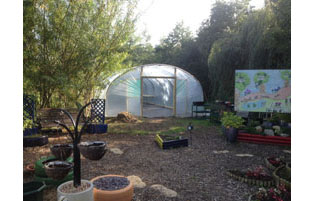Are you looking for a way to encourage your students to spend more time outside? Would you like them to be more excited about nature and incorporate this into lessons? Starting a school gardening project could help you to achieve these goals, while also providing fun for your pupils.
As a busy teacher, the idea of finding the hours to create and look after a garden may seem difficult, but these tips and school garden ideas could make the process easier and provide an opportunity for your pupils to learn and develop outdoors.
School Garden Ideas
With limited time and budgets, when it comes to creating a school garden, you may feel a little overwhelmed. However, many successful gardening projects in primary schools begin as a little patch or raised bed. This makes it more manageable and easier to maintain – plus, this smaller area is perfect for smaller hands!
When planning your garden, consider the following:
- Sunshine: providing fruits and vegetables with lots of sunlight encourages growth and limits disease.
- Facilities: it may be convenient to choose a plot near a water source and storage area.
- Focal point: a central location allows pupils to see the progress of their garden.
- Accessible: wide pathways and narrow raised beds make the garden accessible to all students.
- Involvement: from planning to harvesting, encouraging students to participate regularly and at every stage could help them to engage with the project.
 Gardening for Schools
Gardening for Schools
Starting a school garden requires planning, but research by the Growing Schools initiative has shown that gardening can benefit pupils in many ways, enhancing their education, development and wellbeing.
A school garden can encourage children to learn in a practical and fun way. It can also help to build communication and teamwork skills, boost levels of physical activity, and teach pupils about food, health and nutrition.
While gardening projects in primary schools are fantastic for extra-curricular activities, they can also be utilised as part of the curriculum and help to boost student engagement across a variety of subjects. For example, a garden can provide hands-on learning about life cycles and pollination, be incorporated into story writing, or used to plots graphs and charts.
 Planting a School Garden
Planting a School Garden
After learning about the benefits, you’re probably eager to get started. The good news is, after planning and preparing your school garden – you can learn more about that in our Self-Sufficient Guide – it’s time to start planting!
To get your students excited about gardening, it may be a good idea to plan fruits and vegetables that are quick to harvest. Depending on the season, this could include potatoes, cherry tomatoes, or strawberries. Herbs are also a great idea as they add a variety of scents to the garden as well as attracting bees and insects, providing more learning opportunities.
To help your pupils get the most out of the garden, plan ahead. This means picking fruits and vegetables that will be ready to harvest during term time. Our Fruit and Veg Yearly Planner has done all the hard work for you, showing you when to sow, plant and harvest a variety of produce. Top tip: a greenhouse or polytunnel could be helpful when sowing seeds. Our Educational Polytunnels are very popular - you can take a look at the schools which we have supplied using our interactive map.
Help and Volunteers
The idea of finding time to grow and maintain your school’s garden may seem like a challenge, but there’s loads of resources that can help.
You could try sending out a letter to parents and guardians, telling them about your school garden ideas and its educational benefits. In addition, think about including a sign-up sheet for volunteer gardeners, or a request for donations of equipment and supplies.
There’s also a range of support for gardening projects in primary schools. For information about these, visit the RHS School Gardening Scheme, where you can find out about funding, lesson plans and read informative guides.
Starting a school garden can provide huge benefits for pupils, especially if gardening is included in the curriculum. Use this guide to help you get started and remember to get children involved in every process, from planning to harvesting, so they can reap the benefits.